Giant seals from over 15 million years ago are found in rock layers at Sharktooth Hill. By knowing the age of the fossils, scientists can also know the age of the rock in which it is found.
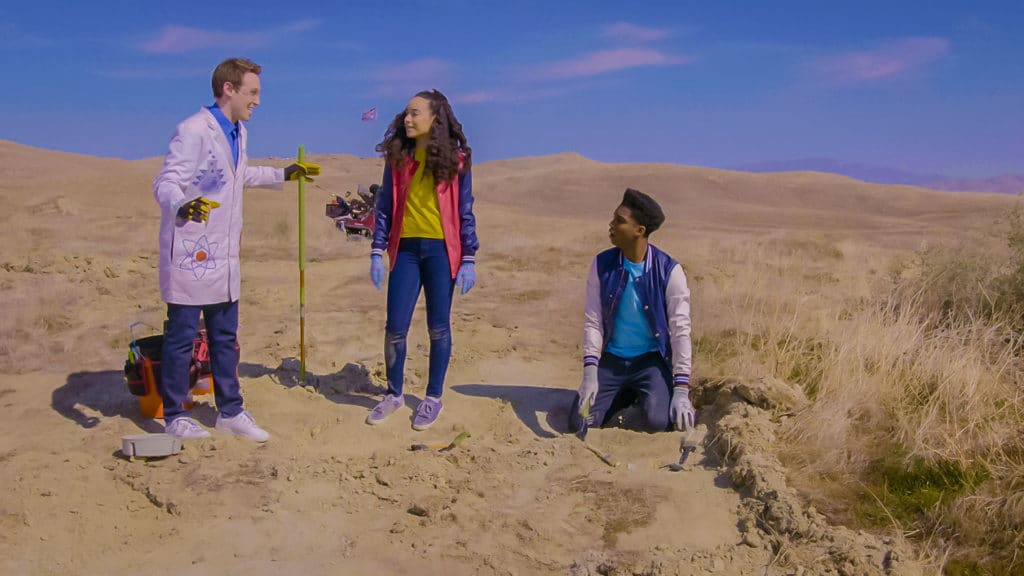
A landscape describes all the visible features of the Earth’s surface now or in the past. We can learn about Earth’s landscapes from the past by studying rock layers and the fossils found in them.
To better understand Earth’s surface features and landscapes ….
LET’S BREAK IT DOWN!
The oldest rock layers are at the bottom and the newest layers are at the top.
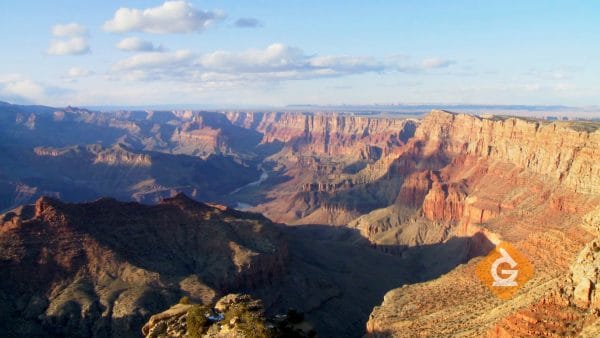
We can tell about the Earth’s history by looking at the different layers. The upper layers, those that are closest to the surface of the Earth, are the newest layers to be laid down.
Layers below are older. Since sedimentary rocks form on top of each other, it is very easy to see Earth’s geologic history in areas where this type of rock is found.
The Grand Canyon is an excellent example. For millions of years, the Earth’s surface was carved by the Colorado River. Many layers of sedimentary rock make up the mile-high walls of the canyon. The walls display a history of the Earth’s surface that dates back about 2 billion years.
The location of fossils in rock layers provides evidence of Earth’s past landscapes.
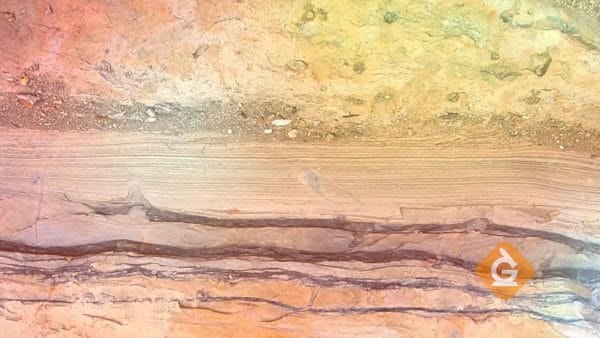
It is hard to guess the age of rock. Scientists have to act like detectives, piecing together a mystery to determine how long ago rocks formed.
Fossils found in a particular rock layer help scientists determine the age of the rock. Scientists use a technique called radiocarbon dating to find out the age of the fossils. Once they know the age of the fossil in the rock, they also know that rock itself is about the same age!
Sharktooth Hill in California tells a story of Earth’s past.
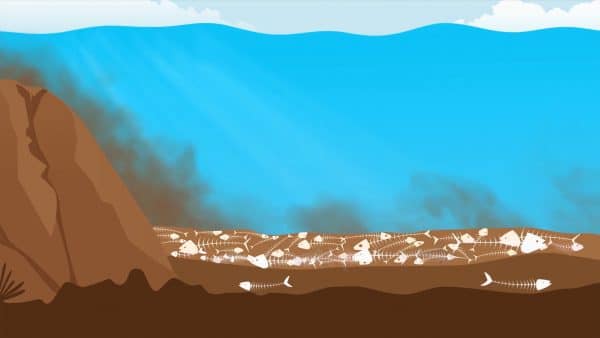
Sharktooth Hill in California is about 100 miles away from the ocean. Millions of years ago, Sharktooth Hill was under the ocean. Here, paleontologists find lots of fossils of marine life, surrounded by silt. The remains of ancient sharks, whales, dolphins, and turtles have been found buried 30 feet underground.
Scientists believe that this area was once an ocean with a river flowing into it which deposited sediment (sand and clay) at the bottom. When animals died here they were buried in the sediment. One day, the river stopped flowing and lots of animals collected at the bottom. When the river started flowing again, it buried all the bones together.
Now, millions of years later, this area is no longer an ocean and the bones are preserved as a layer of fossils known as a bone bed.
EXAMPLES OF EARTH'S ANCIENT LANDSCAPES
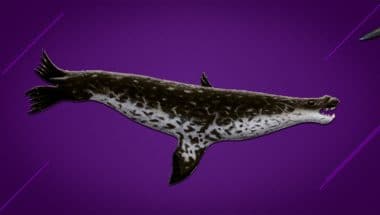
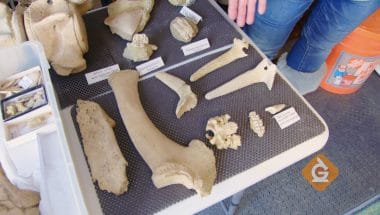
Radiocarbon dating is used to find out how old the fossils are. Scientists compare the carbon in the fossils to carbon today to determine how long ago the fossil formed.
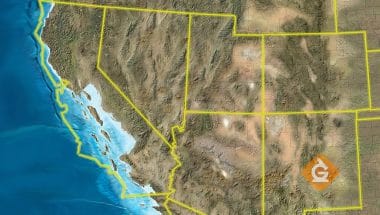
Millions of years ago, the west coast of the United States was a maze of islands and lagoons. Over time the islands collided to create mountains and valleys that make up the state of California.
EARTH’S LANDSCAPES VOCABULARY
EARTH’S LANDSCAPES DISCUSSION QUESTIONS
What kinds of evidence supports the idea that the landscape at Sharktooth Hill was once under the ocean?
Why is it possible to find ancient fossils right at the Earth’s surface?
Is there any evidence that a volcano caused all the animals to die here?
What is the current understanding of how the fossil bone bed at Shark Tooth Hill formed?
How do the rock layers above and below the bone bed compare in age?
Where would you look for evidence of what it was like before the bone bed formed?
How did the bones in the Sharktooth Hill bone bed become jumbled up?
How do we know the central part of the United States was once covered by the ocean?
Skip, I will use a 3 day free trial
Enjoy your free 30 days trial
We use cookies to make your experience with this site better. By using this site you agree to our use of cookies. Click "Decline" to delete and block any non-essential cookies for this site on this specific property, device, and browser. Please read our privacy policy for more information on the cookies we use.Learn More
We use cookies to improve your experience. By using this site, you agree to our use of cookies. Click "Decline" to block non-essential cookies. See our privacy policy for details.Learn More






